Flight Simulator Gave Birth to 3D Video-Game Graphics
40 years on, Flight Simulator is the greatest platform-jumping video game ever
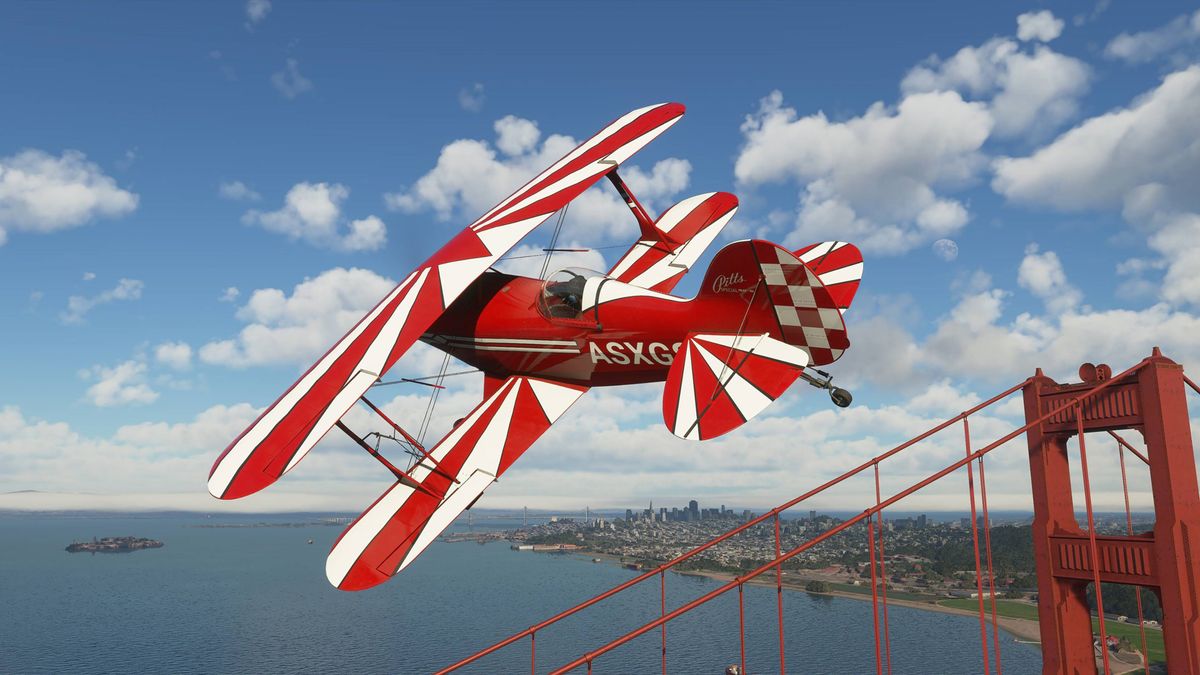
This screenshot from Microsoft Flight Simulator 2020 shows a biplane banking to the left.
In 1999 Bill Gatespenned a moving tribute to the Wright brothers. He credited their winged invention as “the World Wide Web of that era,” one that shifted the world into a global perspective. So it’s only fitting that Microsoft later became the force behind Flight Simulator.
And, like the Wrights’ original Flyer, the game’s legacy has extended beyond flight to embody the shift of perspective that flight allows. Flight Simulator promised to fit the whole world into your computer, and the game kept its promise. That’s why it has become the world’s best-selling flight-simulation franchise: The latest edition has sold more than 2 million copies.
Although 2022 marked the 40th anniversary of Microsoft Flight Simulator, its lineage stretches a few years further back than its official release, in 1982. That makes it the second-oldest video-game franchise still in active development. (The Oregon Trail came out in 1971 and is still with us.)
The heart of the franchise isn’t in gamification but in the technical spectacle it uses to simulate flight and the ground beneath you. The focus on true-to-life depiction reflects the background of the game’s developers.
Microsoft Flight Simulator: A Historyyoutube.com
A passion for flight
Bruce Artwick studied electrical engineering at the University of Illinois at Urbana-Champaign, yet he found time to pursue a dream many teenagers think about but few fulfill: He learned to fly. It was at the university’s flight-instruction program that he met Stu Moment, who would later become his business partner.
In 1976, Artwick wrote his master’s thesis on a flight simulator he’d designed to run on Digital Equipment Corp.’s PDP-11 minicomputer. Its 3D presentation could reach nine frames per second, which was outstanding for the era.
Artwick then took a job with Hughes Aviation, in California, while continuing to work on 3D graphics in his free time. In 1977, he wrote an article for Kilobaud: The Small Computer Magazine describing the “Sublogic Three-Dimensional Micrographics Package” he had created, which brought 3D to microcomputers outfitted with the popular Motorola 6800 microprocessor. Because so many readers were keenly interested, Artwick, looking for help turning the software into a business, reconnected with Stu Moment, and together they founded subLogic.
Dave Denhart, subLogic’s second hire, recalls that the company’s early days were driven by Artwick’s 3D software, updated for emerging microcomputers. “The stuff that [Stu] and Bruce were selling was basically a 3D software package [for microcomputers],” says Denhart. “The [Tandy] TRS-80 was one of them, and I think the Apple II was out by then.”
Artwick often claimed in presentations that subLogic’s software could be used for flight simulation— a suggestion that brought gasps from the audience. A computer displaying the perspective of a pilot soaring above the planet? Most people had never seen anything like it.
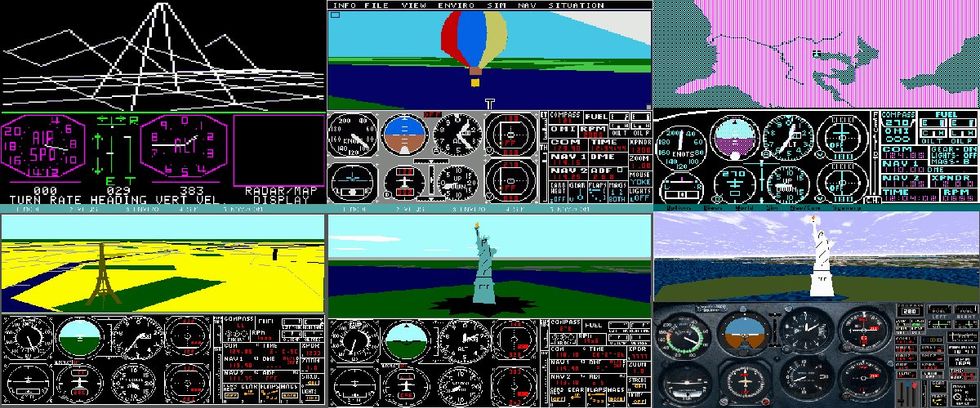
Encouraged, Artwick decided to make it a reality. Flight Simulator launched in late 1979 on the Apple II and the TRS-80 with wireframe graphics and a frame rate in the single digits. It didn’t depict real airspace or modern airplanes. Instead, players flew a World War I-era biplane based on the famous Sopwith Camel. Still, its first-person 3D visuals were ahead of the curve, predating more famous hits like Atari’s Battlezone.
“I know Bruce always saw, from his early days, a potential market for [ Flight Simulator],” says Denhart. “It was when microprocessors became available that I think the lightbulb went off for Bruce that said, Hey, if I put this idea I’ve got for a flight simulator onto cheaper computers, and get that to work, there’s a market for that.”
Artwick was right. In September of 1982, Computer Gaming World magazine ranked Flight Simulator as the fourth best-selling title to date. IBM, craving a showcase for its IBM PC platform, contacted subLogic about bringing Flight Simulator to the new hardware. Microsoft, deep in development of IBM PC DOS, soon called with a similar request—and better terms. It got a version with its own name on the label, though Artwick continued to own his company for years to come.
Microsoft Flight Simulator, released in late 1982, continued to improve in the months that followed, mirroring the advancements in microcomputers. The graphics moved from monochrome to color (on PCs with the right hardware), and the display refresh rate increased to 15 frames per second, which one reviewer described as “very smooth.” Players piloted a Cessna 182 in four real-world areas, including Chicago and Seattle. For the first time, a home-computer enthusiast could fly a real-looking model of an airplane across true-to-life terrain, taking off and landing at facsimiles of real airports.
The realism extended to the flight model, which made use of an effective technique: lookup tables. That’s because real-time calculations of forces on an aircraft were beyond the capabilities of early IBM PCs. Fortunately, the aircraft manufacturers had already calculated how their products would perform. This gave subLogic a cheat sheet to build on.
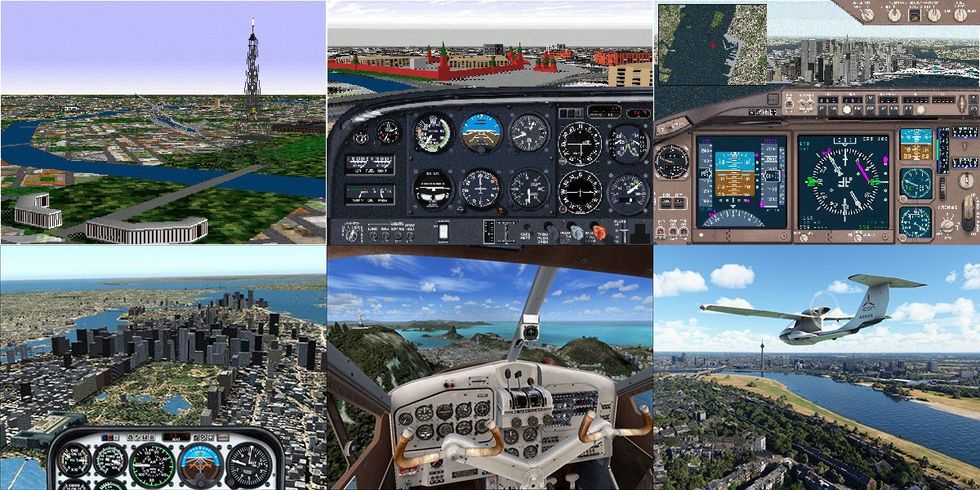
“You basically say, Here’s my input, what’s my output?” says Denhart. “[The simulator] can just simply do a lookup. Now, because of resolution limitations and memory concerns, you wouldn’t have a superlarge lookup table because the processors and memory couldn’t handle that. But you’d have a sort of medium size, even small size, and between the data points you can do interpolation.”
With the flight model in place, subLogic expanded the simulation’s scope. Microsoft Flight Simulator 2.0 (1984) modeled the entireUnited States, Microsoft Flight Simulator 3.0 (1988) brought the Gates Learjet 25 and substantially more airports, and Microsoft Flight Simulator 4.0 (1989) added random events, including weather.
In 1993, Microsoft Flight Simulator 5.0 brought a new killer feature: textures. Previously, land between airports had been represented by patches of color—green for forests, gray for urban, blue for water. Textures offered new details. Beginning with Flight Simulator 5.1, those details were based on satellite imagery. For many, Flight Simulator would be the first opportunity to see satellite imagery in real-time 3D software.
Flight Simulator’s first decade on the market was a time of smooth ascent. Yet there was turbulence behind the scenes, reflecting bad air that had come even earlier. Artwick and Moment often disagreed, and by around 1980 they worked separately, Moment by day, Artwick by night. The split eventually became permanent, with Artwick leaving to form the Bruce Artwick Organization (BAO) in the late 1980s. 1988’s Flight Simulator 3.0 was the last version credited to subLogic.
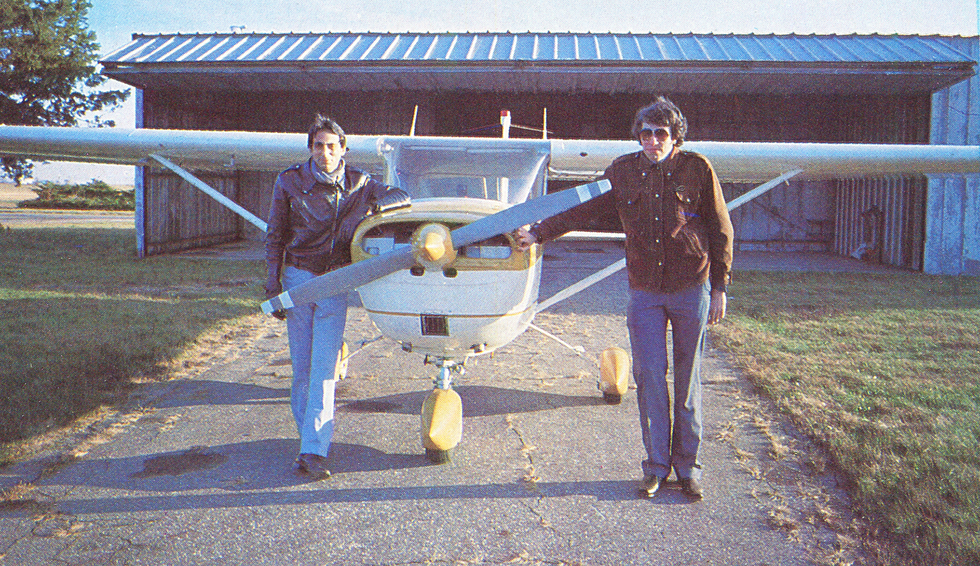
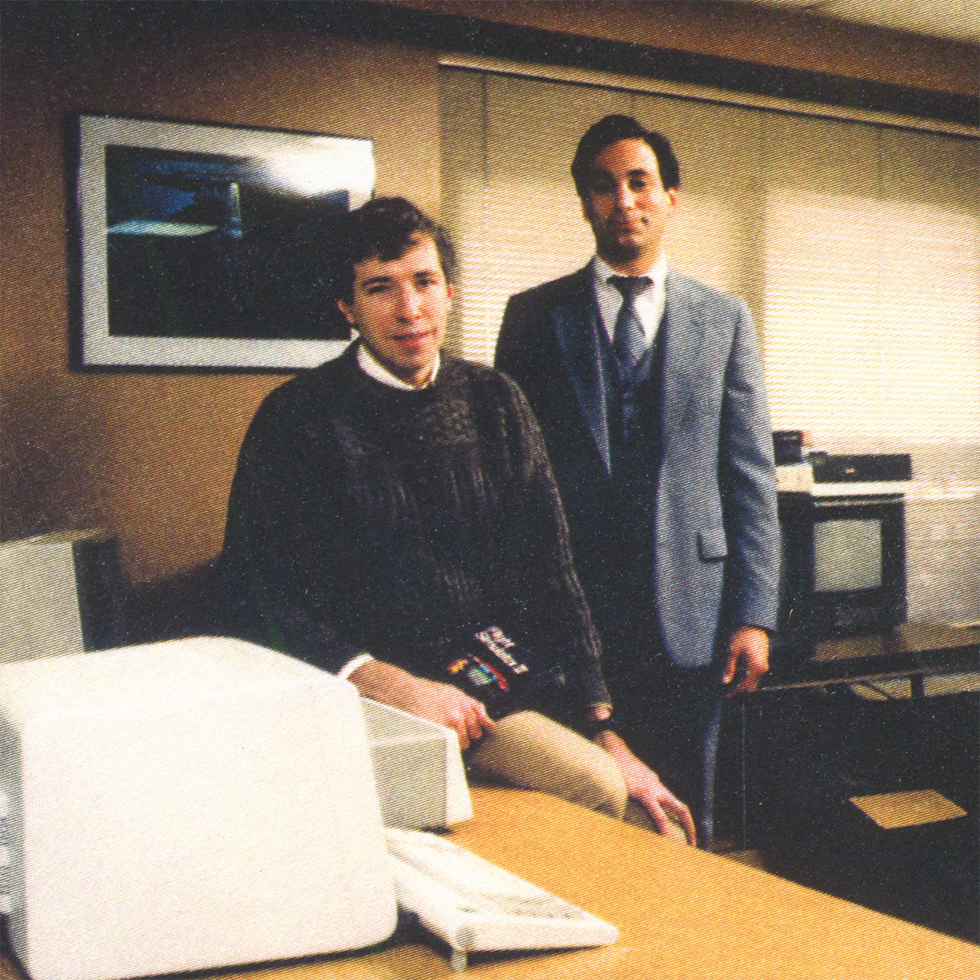
The young Bruce Artwick [top photo, right; bottom photo, left]and Stu Moment pose beside an airplane and beside an IBM PC.
Stu Moment
Perhaps this schism contributed to Artwick’s decision to sell to Microsoft in 1995. Artwick could not be reached for this article, but sources employed before and after the sale remembered it as an abrupt yet unsurprising decision. Artwick had spent nearly two decades dedicated to the business. The team was also having differences with Microsoft.
“I think ultimately Microsoft wanted full control of the product versus Bruce holding on to it,” says Paul Donlan, who became group manager at BAO the year prior to Microsoft’s acquisition. “We were a small shop, and we played by small-shop rules, and that sometimes gave the Microsoft people difficulty. It was very easy for us to say no, which frustrated them tremendously.”
Microsoft takes control
Microsoft’s purchase of Flight Simulator brought an alluring visual showcase in-house at the right time. The flashy launch of Windows 95, hosted by Jay Leno, leaned on media features to convince consumers it was time to retire MS-DOS computers and buy a Windows replacement. (This push, incidentally, is what put the game on my radar: Microsoft Flight Simulator for Windows 95 came bundled with my family’s first Windows 95 computer.)
Moving Flight Simulator to Windows was no small feat. The game was deeply rooted in MS-DOS and the increasingly arcane software development practices of the early 1980s. Windows 95 could in theory run MS-DOS applications, but this wasn’t a good fit for Flight Simulator.
SubLogic’s Denhart explains that up to this point, Flight Simulator didn’t really use Microsoft’s operating system: “You’d stick the floppy into the floppy drive, it’d boot up, and I think it ran a minimal MS-DOS, but just enough to get started. And then it basically ignored MS-DOS.” The team had also resisted early versions of Windows over concerns it would slow the simulator to a crawl.
But now that Microsoft was in charge, failure wasn’t an option.
“When we went to Flight Sim 95 there was this huge port,” recalls Donlan, who credits Mike Schroeter, now a software engineer for Lockheed’s Prepar3D simulation platform, with taking the role of point man. “I can’t speak as to how significant it was across everything, but a lot of that code was being moved out of Assembly [language] and into C. There was a tremendous workload that was involved with that.”
It was a first taste of Microsoft’s culture of relentless toil. It was also only partially successful, as reviewers found performance issues on even the quickest home PCs. The team’s concerns about Windows’ ability to handle the simulation, it turned out, weren’t unfounded. Still, Microsoft Flight Simulator for Windows 95 was the eye candy Microsoft needed to highlight Windows 95’s media prowess.
The team doubled down on visuals for Microsoft Flight Simulator 98, which again pushed the bleeding edge by adopting 3D hardware acceleration. Test lead Hal Bryan says the effort demanded long hours for testing various 3D accelerators, which had yet to settle on common standards. The tests paid off, however, and Flight Simulator 98 quelled reviewers’ complaints about pokey performance.
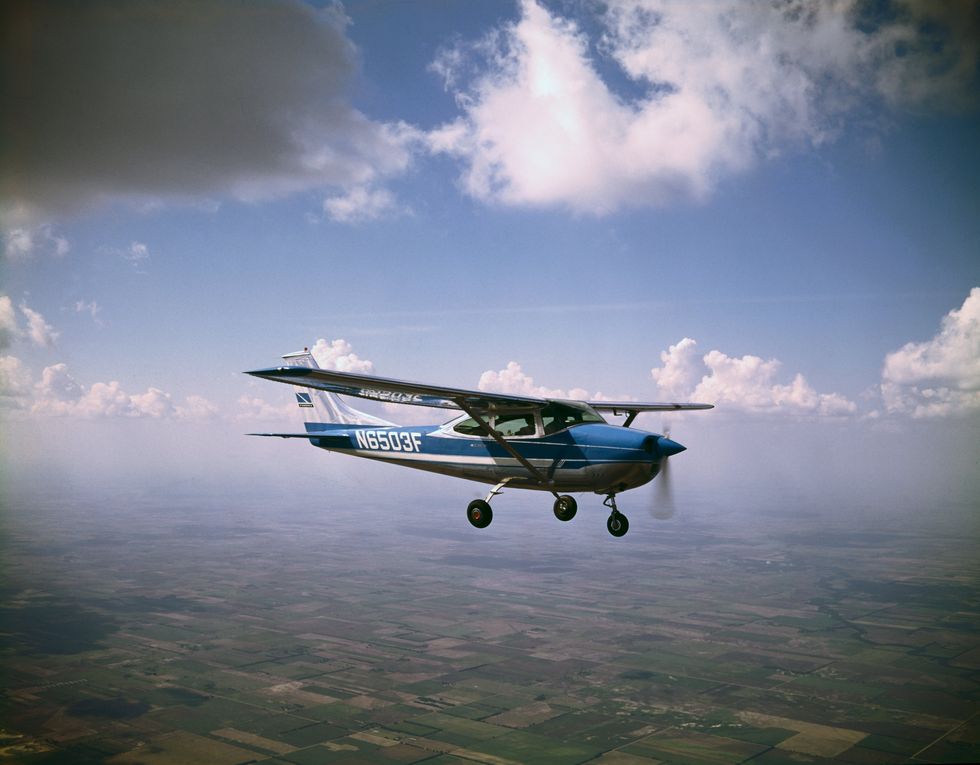
Users also benefited from the rise of CD-ROM and DVD-ROM media, which provided space for more detailed textures, more terrain data, and quicker data-transfer speeds. Jason Dent, first hired for Microsoft’s Encarta World Atlas, soon moved to assist with Flight Simulator. Satellite imagery had improved the simulator’s visuals, but its data was still coarse—“between 4 and 16 kilometers on a side,” says Dent. Entire mountains were missing from less-traveled regions. To avoid such gaps, Dent and his colleagues combined satellite images with land-use data to deliver scale and precision simultaneously.
The hard work came to fruition in Flight Simulator 2000, which reached a technical milestone: It mapped the entire planet in 1-kilometer blocks. Scot Bayless, the studio manager overseeing the team, says an early demo left Bill Gates stunned.
Bayless recalls that after explaining to Gates that the software included every airport on the planet, Gates responded by saying, “‘You’re full of shit. That’s the stupidest fucking thing I’ve ever heard.’” This was Gates’s highest form of praise, Bayless notes. “In the lore of Microsoft, if Bill says that to you, you’re made.”
And, for a time, Flight Simulator did have it made. New versions landed on best-seller charts. The team, now renamed Aces Game Studio, created or contracted spin-offs like Microsoft Combat Flight Simulator and Microsoft Space Simulator. There was even talk of a universal platform for general-purpose, world-scale simulation, which eventually spun into Microsoft’s Enterprise Simulation Platform. ESP lasted only a few years but was licensed by Lockheed Martin for its Prepar3D simulation platform. In retrospect, ESP feels like a predecessor to modern efforts to build “digital twins” to simulate and replicate real-world environments.
Yet Flight Simulator had a problem, and it was coming from inside the company: the Xbox game console. Launched in 2001, Xbox was built to oppose Sony’s PlayStation 2, released in 2000, which had a DVD drive and could (with an accessory) connect to the Internet. Microsoft worried that some consumers might view it as a low-cost PC alternative.
Aces Game Studio explored bringing Flight Simulator to Xbox, says Bryan. But these efforts were frustrated by the challenge of adapting keyboard and mouse controls to the game pad. Bayless believes this created a rift between the Aces studio and Microsoft, and he regrets not pushing harder for an Xbox version. “I think we would have ended up with a stronger, more flexible, more robust, more future-proof engine.”
Aces, flying solo in an Xbox-centric Microsoft Games Division, became an easy target when the financial crisis of 2008 forced company-wide layoffs. For those affected, it was a nasty surprise, but the years have allowed some of them to accept that Microsoft’s decisions made sense, because the simulator’s last iterations had arguably been stagnant, focusing on past strengths and ignoring new platforms.
It was Denhart, the subLogic employee who was there when it all began, who wound down the project. He stayed on to archive the studio’s work, bringing this era of Flight Simulator to a close.
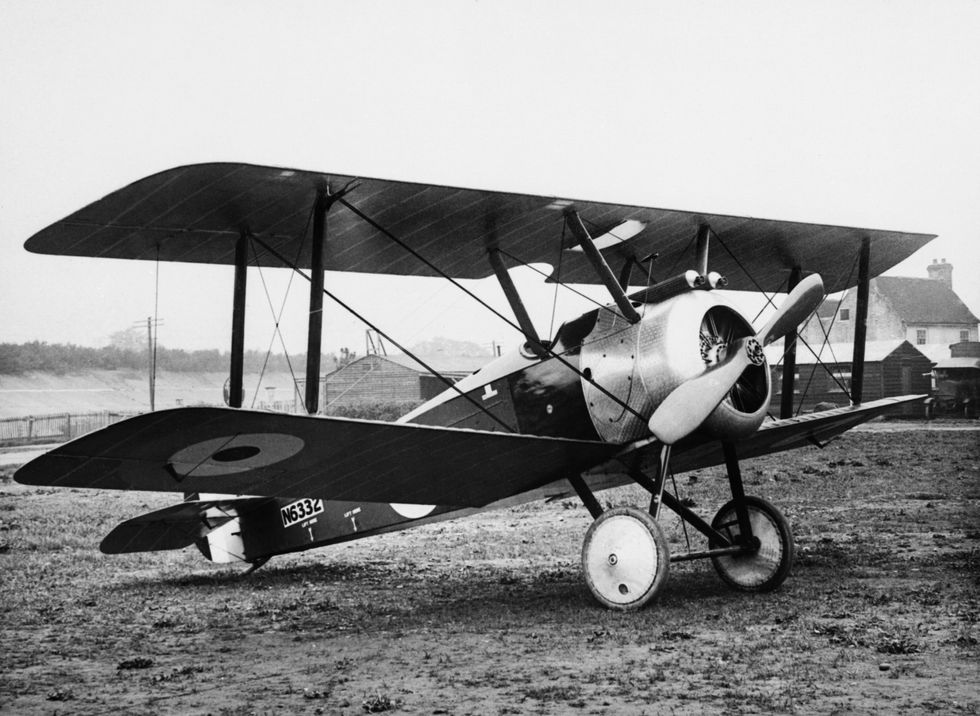
The phoenix rises from the ashes
Then came Jorg Neumann, a Microsoft veteran working on a HoloLens project called HoloTour—an immersive virtual-reality tourist guide. It included a bird’s-eye perspective of locales like Machu Picchu, in Peru. The project faced challenges, however, especially at Machu Picchu, where the team had less data than it would have liked.
“It was pretty clear that, even with on-the-ground photographs, it was superhard to do a full, nice 3D model,” says Neumann. “At which point we just said, Why don’t we go and just have a plane fly overhead and give us the lidar data and appropriate photogrammetry?” (Lidar is a laser-based technique for estimating range to an object, while photogrammetry is 3D information extracted from photographs.)
The flyover never happened, but Neumann’s perspective changed. “The idea persisted in my head. There is something there. We should try to get our game worlds augmented via aerial data.” He realized Microsoft already had the perfect application: Flight Simulator.
Neumann, using data from Bing, threw together a demo of a Cessna flying over Seattle—the same plane and city available in the original Microsoft Flight Simulator. It looked spectacular, even at that early stage. The project progressed, and Denhart’s archive proved invaluable.
“The code base and the project were really well archived,” says Neumann. The code was sent to Asobo Studio, the lead developer on the HoloTour project, and used to preserve compatibility with third-party planes designed for Flight Simulator X, the last iteration released by Aces Game Studio. The new Flight Simulator also retains a “legacy” mode that activates the old flight model, preserving a lineage tracing all the way back to 1982.
Most people flying today’s Flight Simulator will enjoy the default “modern” simulation, which models up to 1,500 flight surfaces. Airflow over each point in the simulation is determined by not only the plane’s speed and design but also environmental effects such as weather and nearby terrain. This level of simulation was unimaginable in 1982, but today it can run on any recent midrange AMD or Intel processor.
Flight Simulator promised to fit the entire world into your computer, and the game kept its promise.
Hal Bryan notes that the prior simulation fell apart in extreme situations, such as a stall and spin, so that the plane would behave in a wooden and overly predictable fashion. He knows, because that’s how he used to test the thing. The new simulation can precisely model airflow over many surfaces and can thus organically determine when a stall would begin and whether it becomes a spin.
While Bing’s data was useful in creating Flight Simulator’s world, the team still faced limitations. Quality photogrammetry data isn’t available for every inch of the ground. To fill in the gaps, Asobo used Blackshark.ai’s machine learning to convert photogrammetry data and satellite photos into a reproduction of the surface of our planet. The Blackshark.ai technology automatically creates buildings and adds them where appropriate, based on satellite photos. Machine learning also corrects color variations between photos while removing clouds and shadows.
“We wanted to have unique buildings, and basically you do this by procedural generation, which takes input from building footprints, the roof type, roof color, zoning, building density, and other information,” says Arno Hollosi, chief technology officer of Blackshark.ai. This data is then modified by “archetypes” that have styles appropriate for the geographic region. The result is a diverse range of 3D buildings that look realistic, at least from a thousand or so meters above the ground. This technique can also depict small communities and even lone rural houses and buildings, something artists could never hope to accomplish while adding buildings one by one.
Even so, the modern simulator isn’t perfect. A city street may look right, but your house probably won’t. Simulated air traffic isn’t as heavy as it is in reality. In-simulation messages from air-traffic control are often inaccurate or absent, especially at midsize airports. Weather is often stunningly beautiful, but it only vaguely mimics the real world. The solutions to these problems will, like so many of Flight Simulator’s additions and features, require new technologies.
Yet one core success is undeniable: Microsoft Flight Simulator fits the entire world in your PC. It can even fit the entire world in your pocket through Microsoft’s xCloud streaming app for smartphones, allowing anyone with a modern smartphone to load the simulator and fly (virtually) from any location in the world to any other.
“We had this ambition to get the whole world in there,” says Bayless. “And, in fact, we kind of did.”
This article appears in the June 2023 print issue as “The Miracle of Flight Simulator.”
- Danny Cohen, Inventor of the First Flight Simulator, Dies at 81 ›
- The World's Most Dangerous Driving Simulator ›
- Microsoft’s Flight Simulator 2020 Blurs the Line Between Tools and Toys ›


